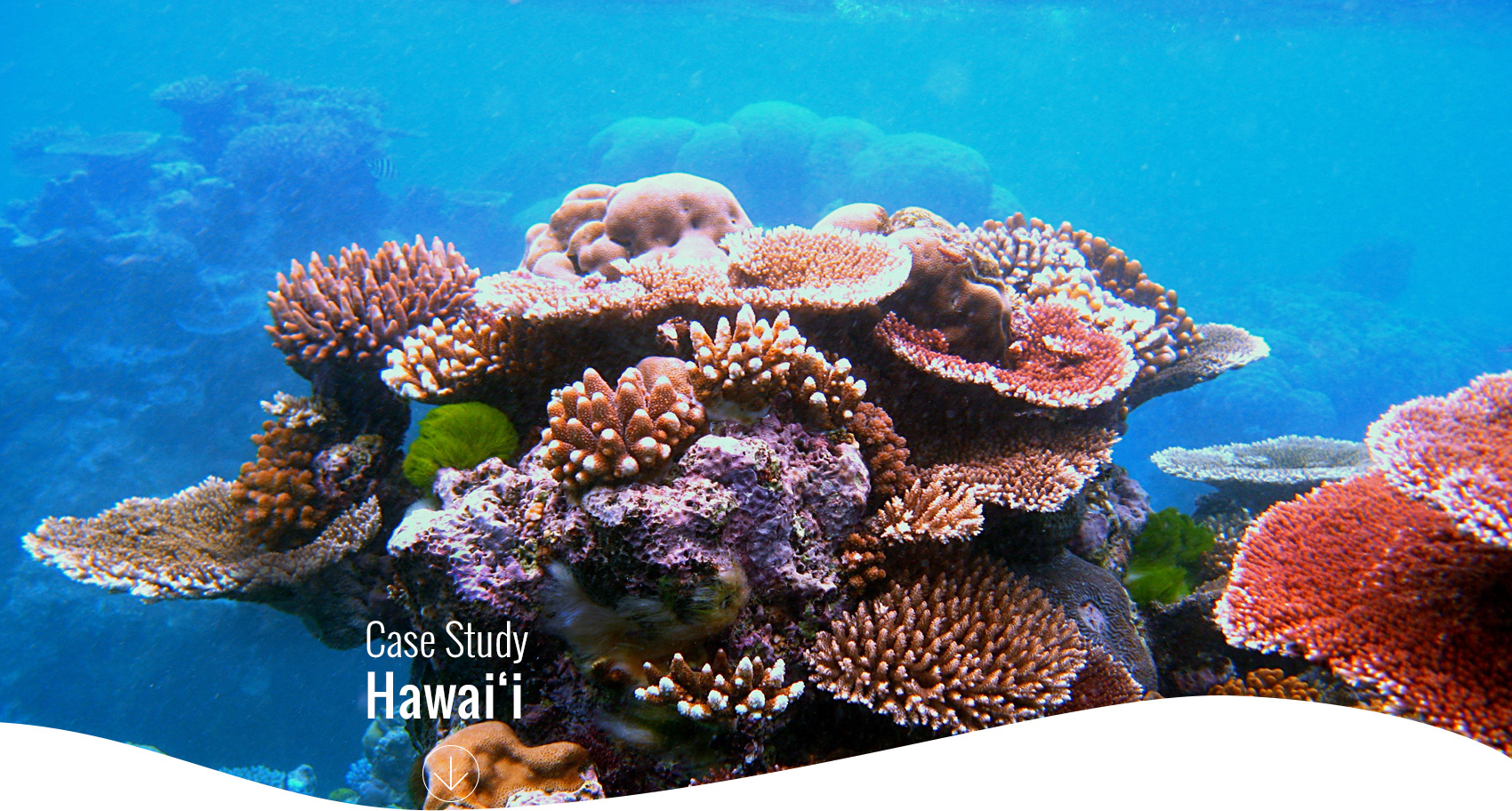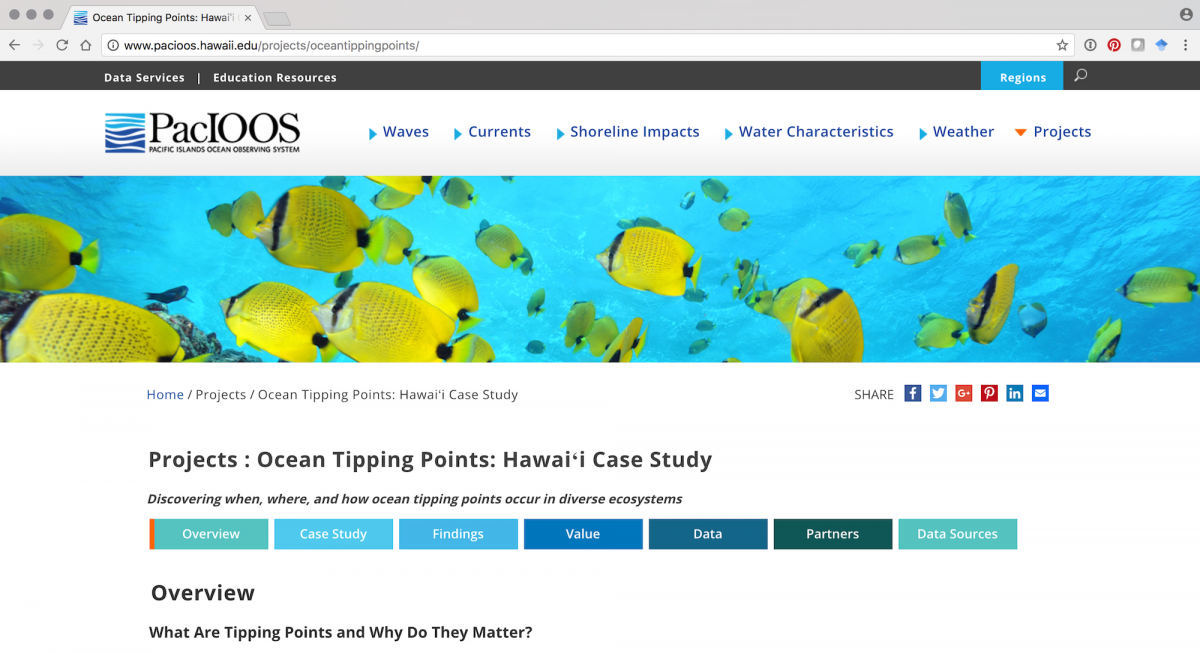Learn More
To find out more about our research, visit our project website at www.oceantippingpoints.org. If you have additional questions, please contact case study lead, Dr. Kimberly Selkoe.
Our Team
Kim Selkoe, National Center for Ecological Analysis and Synthesis, UC Santa Barbara, Hawaii Institute of Marine Biology, Case study lead
Alan Friedlander, National Geographic Society, Co-lead
Kirsten Oleson, University of Hawai'i, Co-lead
Willow Battista, EDF
Meg Caldwell, Packard Foundation
Larry Crowder, Stanford University Center for Ocean Solutions
Mary Donovan, University of Hawai'i
Ashley Erickson, Stanford University Center for Ocean Solutions
Kim Falinski, The Nature Conservancy
Rod Fujita, EDF
Whitney Goodell, University of Hawai'i
Don Gourlie, Stanford University Center for Ocean Solutions
Jamison Gove, NOAA
Nick Graham, Lancaster University
Jean Baptiste Jouffray, Stockholm Resilience Centre
Carrie Kappel, National Center for Ecological Analysis and Synthesis, UC Santa Barbara
Kendra Karr, EDF
Jack Kittinger, Conservation International
Joey Lecky, NOAA
Albert Norström, Stockholm Resilience Centre
Magnus Nyström, Stockholm Resilience Centre
See the full list of Ocean Tipping Points project contributors.
Interactive storymap
Click on the map below to explore the human and environmental drivers of reef conditions in Hawaii.
Access datasets
Download many of the datasets developed through this case study at PacIOOS:
References
-
Battista, W.B., R.P. Kelly, A.L. Erickson, & R. Fujita. 2016. A comprehensive method for assessing marine resource governance: Case study in Kāne‘ohe Bay, Hawai‘i. Coastal Management 44: 295-332.
-
Donovan et al. in prep (fish meta-analysis)
-
Donovan, M. K., A. M. Friedlander, J. Lecky, J. Jouffray, G. J. Williams, L. M. Wedding, L. B. Crowder, A. Erickson, N. A. J. Graham, J. M. Gove, C. V. Kappel, K. Karr, J. N. Kittinger, A. V. Nortrom, M. Nystrom, K. L. L. Oleson, K. Stamoulis, C. White, I. D. Williams, K. A. Selkoe. Integrating fish and benthic communities for a new understanding of coral reef regimes. In prep.
-
Wedding, L.M., J. Lecky, J. M. Gove, H. R. Walecka, M. K. Donovan, G. J. Williams, J. Jouffray, L. B. Crowder, A. Erickson, K. Falinski, A. M. Friedlander, C. V. Kappel, J. N. Kittinger, K. McCoy, A. Norström, Magnus Nyström, K. L.L. Oleson, K. A. Stamoulis, C. White, and K. A. Selkoe. Advancing the integration of spatial data to map human and natural drivers on coral reefs. Submitted to PLOS ONE.
-
Jouffray et al. in prep (regime driver analysis)


